‘Anyone who has once known this land can never be quite free from the nostalgia for it’: The Country Life guide to Sicily
Everything you need to know about Sicily, from where to stay, to what to do (according to locals in the know).


Adam Hay-Nicholls
Travel a short distance in Sicily and the accents, the cuisine and the culture shifts dramatically. The island is one of contrasts, and not everywhere is the glossy, Amalfi-like and homogenous picture painted by the second season of the White Lotus.
Sicily is so placed that, over time, everyone’s had a peck of it, from the Ancient Greeks, Normans and Spanish, to the Arabs and, briefly, British. Each one left something of themselves behind. This mosaic of cultural influences has consolidated into a strong Sicilian identity and a series of proud traditions — it’s enthralling to even the most seasoned traveller.
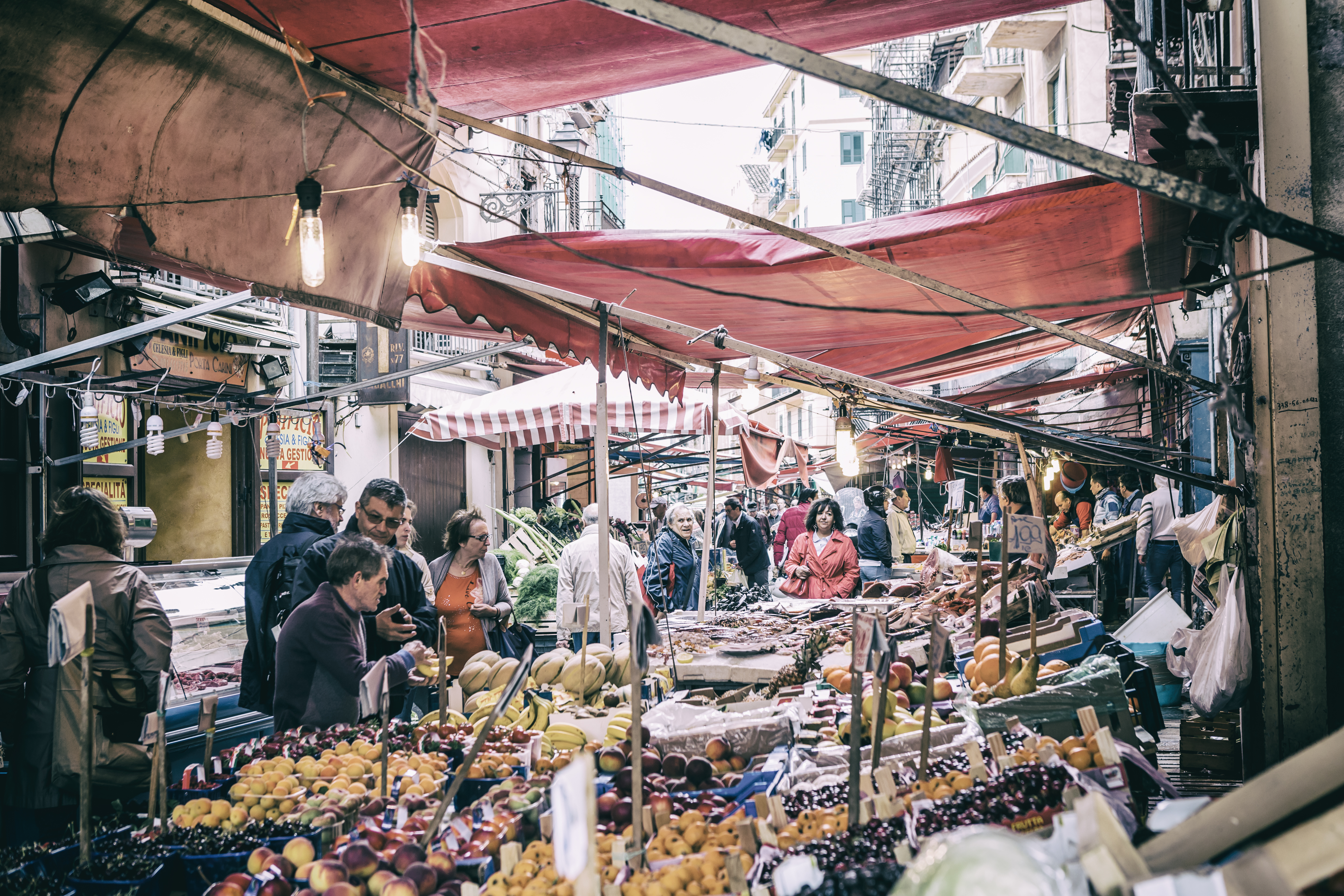
Mercato del Capo is one of Palermo's three main historic markets, alongside Ballarò and Vucciria.
In the gritty capital, Palermo, markets such as Vucciria and Ballarò thrum with energy and bewitch first-time goers. Make sure to step off the tourist track and explore side streets criss-crossed with low-slung telephone wires and studded with antique- and bookshops. You’ll likely walk past a crumbling palazzo without even realising — weathered emblems of Sicily’s own Golden Age (though some are now being rescued by billionaire art collectors and bold, young things).
That said, Irene Forte, the founder of her namesake skincare company and Rocco Forte’s daughter (his eponymous hotel group is on track to open its third hotel on Sicily this year), describes Palermo’s recent transformation — ‘once crumbling palazzos and piazzas, given new life.’ She lauds Rocco and her aunt, Olga Polizzi, with restoring Villa Igiea ‘which has given the city a true five-star landmark. It’s a city that feels cleaner and safer than it did a decade ago, though still retains its grit and rough edges, which is part of its character and what makes it feel so alive’.
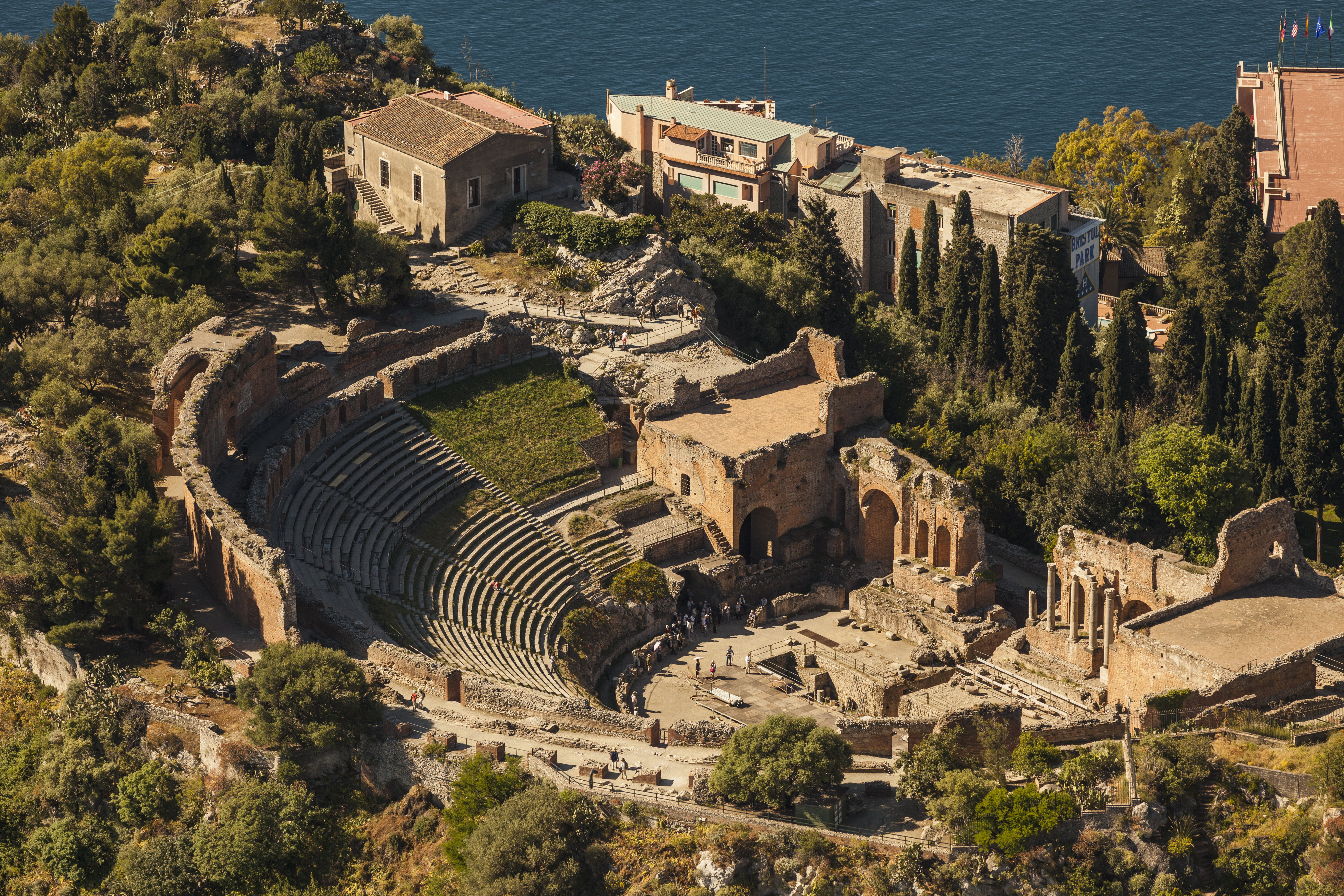
The ancient theatre of Taormina is an Ancient Greek theatre in Taormina, Sicily, built in the 3BC. It was capable of holding up to 1,000 spectators.
In the west, you’ll find swathes of fiercely protected coastline, orchards, olive groves and, in the springtime, lots of mimosa. In the south-west, there’s Agrigento and its Greek temples, and in the south-east, the Baroque towns of Val di Noto that seem to glint in the sunshine. Etna rises menacingly over Catania and Taormina’s clifftop dolce vita scene, dotted with flamboyant villas and a patchwork of agriturismos and vineyards.
‘Anyone who has once known this land,’ quipped D.H. Lawrence, ‘can never be quite free from the nostalgia for it.’
Where to stay
Villa Igeia, A Rocco Forte Hotel, Palermo
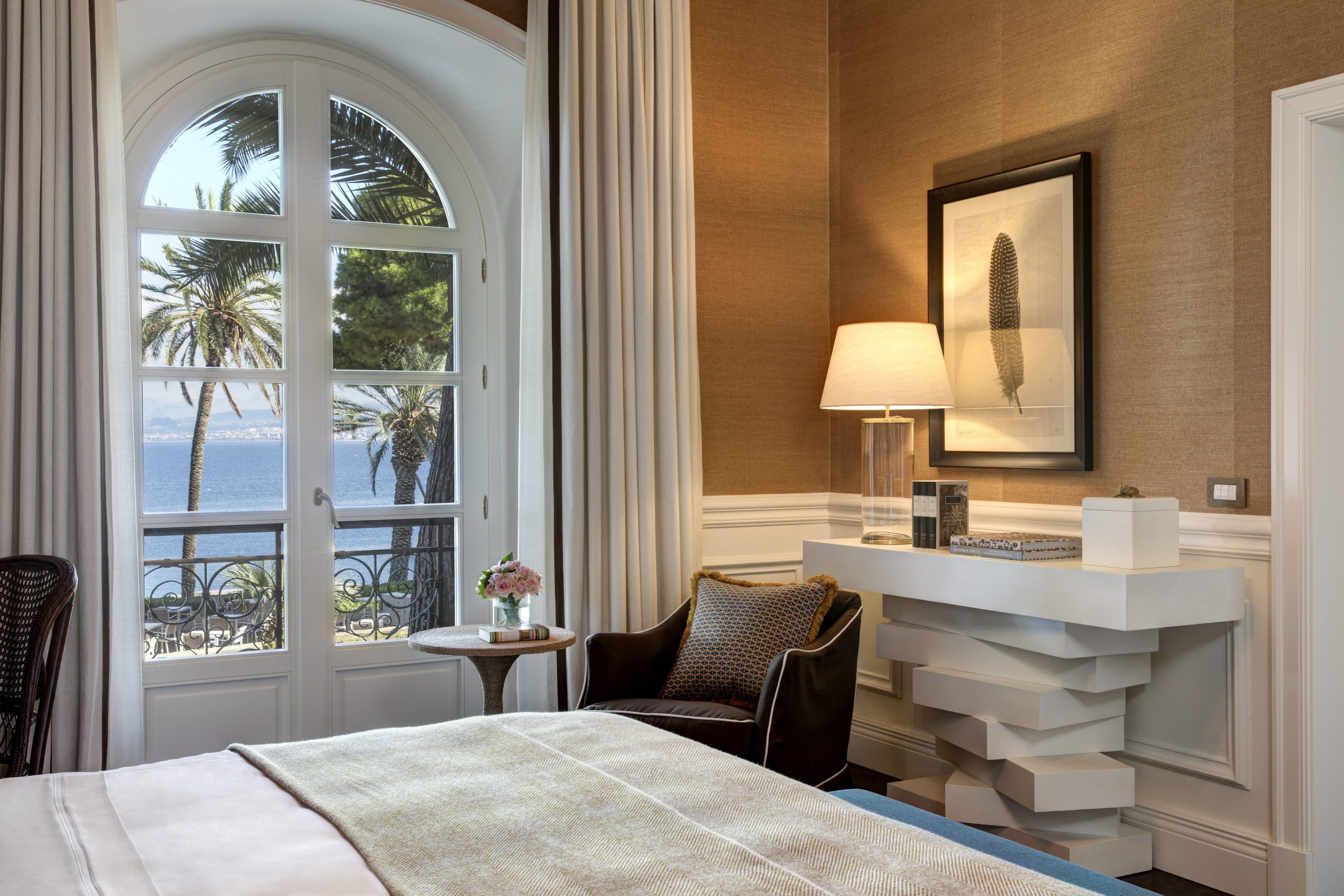
'I’m off to Palermo for a few days,’ I tell an Italian chum. ‘Ah, staying at the Villa Igiea?’ She asks, such is its allure. A sandstone palazzo on the Tyrrhenian sea front, close to the docks, it’s a verdant oasis in an admittedly grim neighbourhood. The incongruous location is close to the prison that houses a swathe of the Cosa Nostra. Around these streets, from the 1970s through to the mid 1990s, shots rang and bombs blasted.
Exquisite houses, the beauty of Nature, and how to get the most from your life, straight to your inbox.
Those were the hotel’s lost years, tired and forlorn. It wasn’t always thus. Built in 1899, it attracted the Belle Epoque’s aristocracy, followed by Hollywood icons Greta Garbo, Grace Kelly, Sophia Loren and Kirk Douglas. Just as blossoming Palermo has put the mafia behind it, Rocco Forte has lovingly restored the Villa Igiea to its former glory.
Using the palazzo’s untouched Art Nouveau Sala Basile, adorned with frescos in sage, blue and yellow, as a colour chart, these restrained, but sumptuous shades are now found throughout the 100 rooms. Vibrant majolica tiles make the bathrooms highly Insta-worthy. The spirit of Garbo and friends can be felt in the light-filled Florio restaurant, an elegantly revitalised time capsule with lush plants, rattan furnishings, floral upholstery and antique mirrors, and in the vaulted Igiea Terrazza bar, a cosy space with 1950s murals, wrought-iron chandeliers, and one of the most erudite cocktail menus this imbiber has sampled, drinks served with buxom, juicy green olives.
The Villa Igiea manages to be fresh and unstuffy, yet is infused with the pioneering luxury of an era when, on learning you were in town, everyone knew where you’d be staying.
From £291 per night; visit the Villa Igeia website for more information and to book
Dimora Delle Balze, Noto
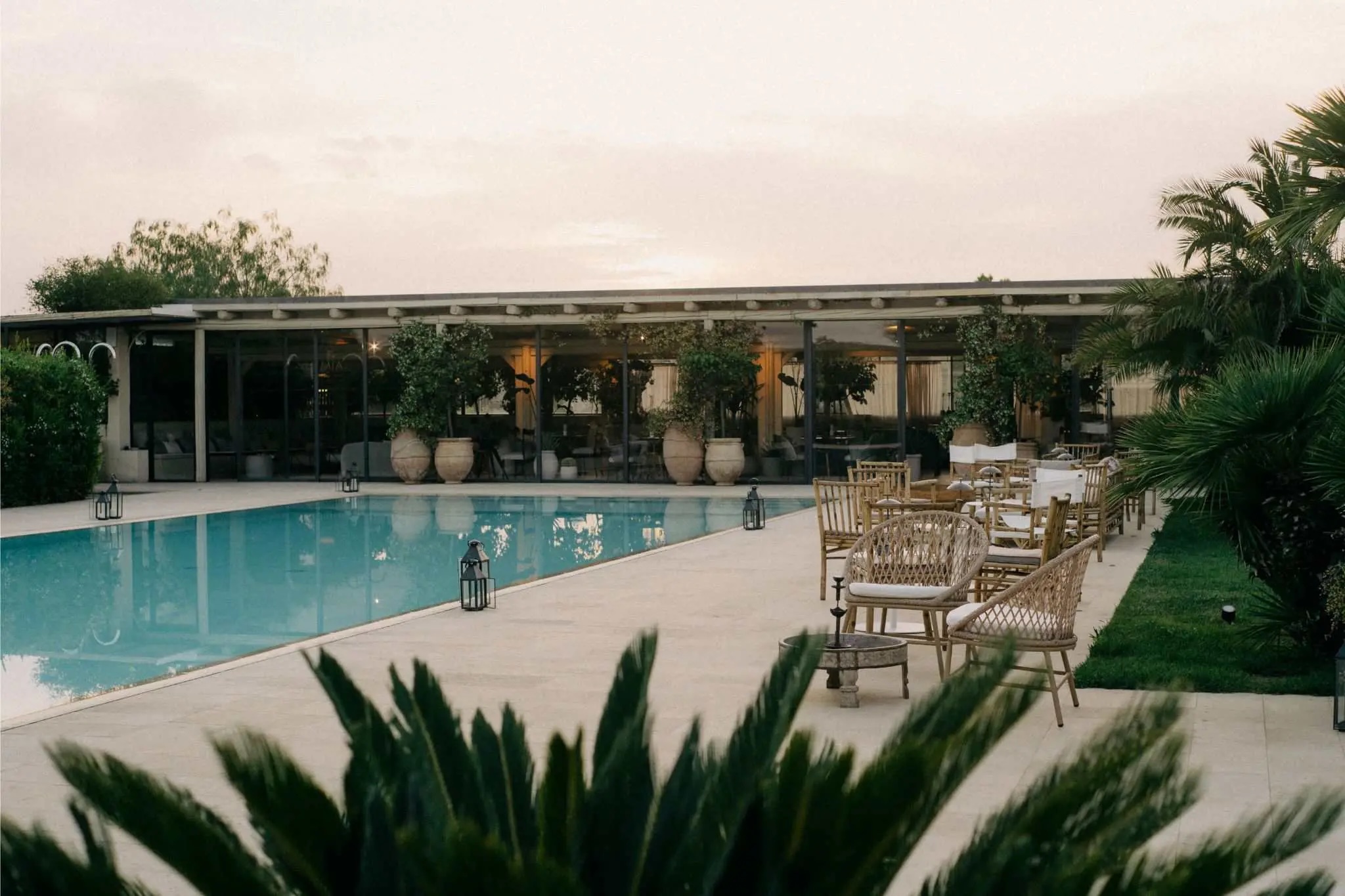
Dimora Delle Balze is a captivating maze of low-slung buildings and limestone courtyards that guests float through, from their rooms to breakfast, or the glassy pool. Its genius lies in the designers’ reluctance to overly polish or curate anything, which lends this 18th century fortified masseria a home-spun, lived-in feel.
Leaning against its freckled walls are day beds for siestas; alternatively, at the end of a boardwalk, on a rock promontory, there are cabanas, with far-reaching views of the hotel’s own organic farm. Its bounty is served at breakfast, on a large farm table that strains under the weight of orchard jams, pistachio cakes and local cheeses. Poolside lunches at Lumìa Lounge are washed down with a negroni spagliato and glasses of Etna white wines. It’s the sort of place you can pitch up at with a book, a swimsuit and absolutely no plans.
From £371 per night; visit the Dimora website for more information and to book
Palazzo Previtera, Linguaglossa
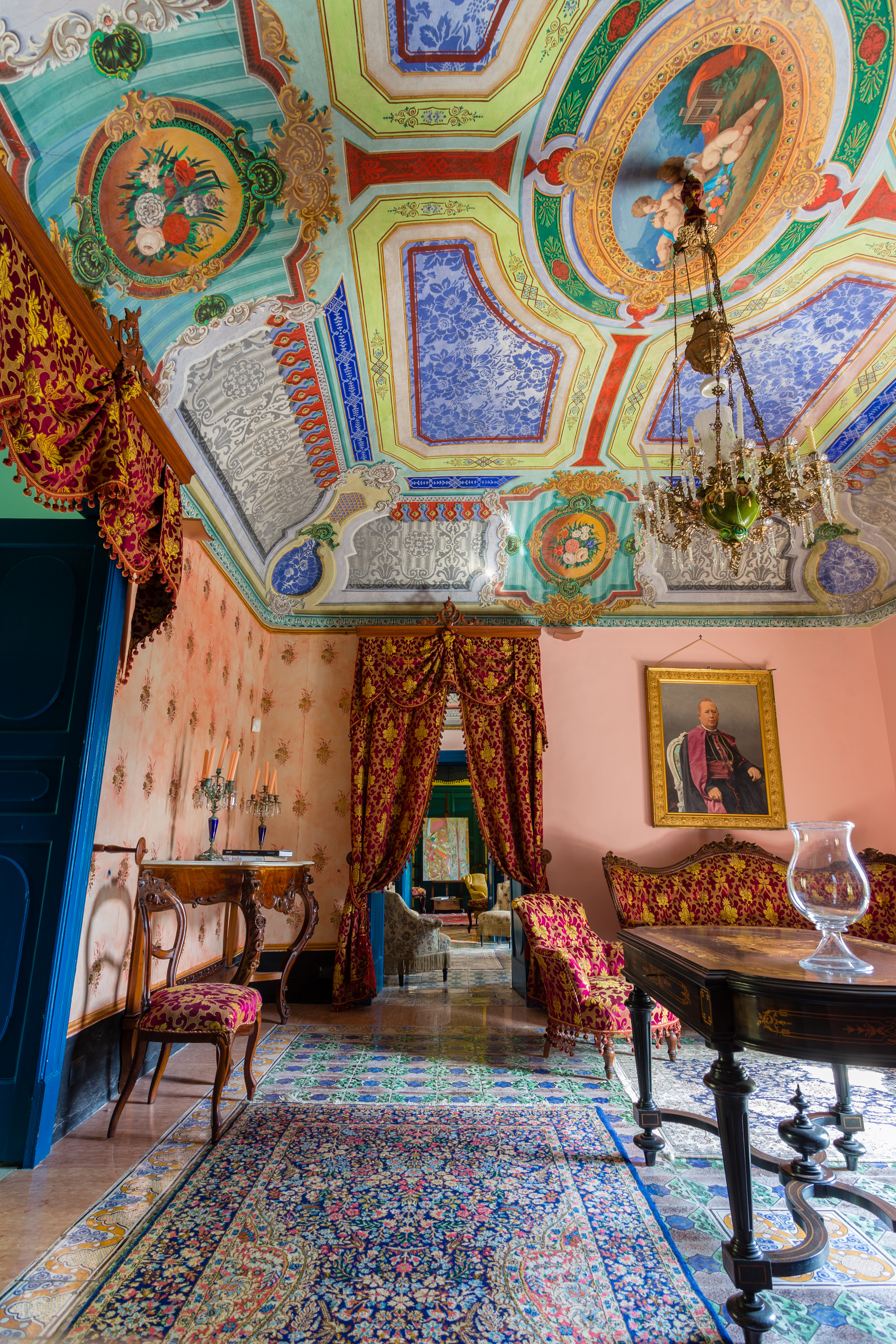
Palazzo Previtera’s mustard walls and unassuming entrance belie its bejewelled interiors — a colourful feast of Italian maximalism that has been scrupulously returned to its former, sumptuous glory by Alfio Puglisi.
Alfio’s family have owned this wildly flamboyant palazzo since the 17th century, and his tenure chimes with Etna’s own new-wave wine-making renaissance, spearheaded by smaller growers full of fresh ideas. The guesthouse’s restaurant is helmed by Alberto Carpinteri, previously of two Michelin-star restaurant Cicco Sultano.
Rooms range from simple guesthouse digs and charming cottages, to the bells-and-whistles ‘living museum house’ — a two-bedroom showstopper with access to the property’s private rooms.
From £102 per night; visit the Palazzo Previtera website for more information and to book
Villa Sant'Andrea, A Belmond Hotel, Taormina Mare
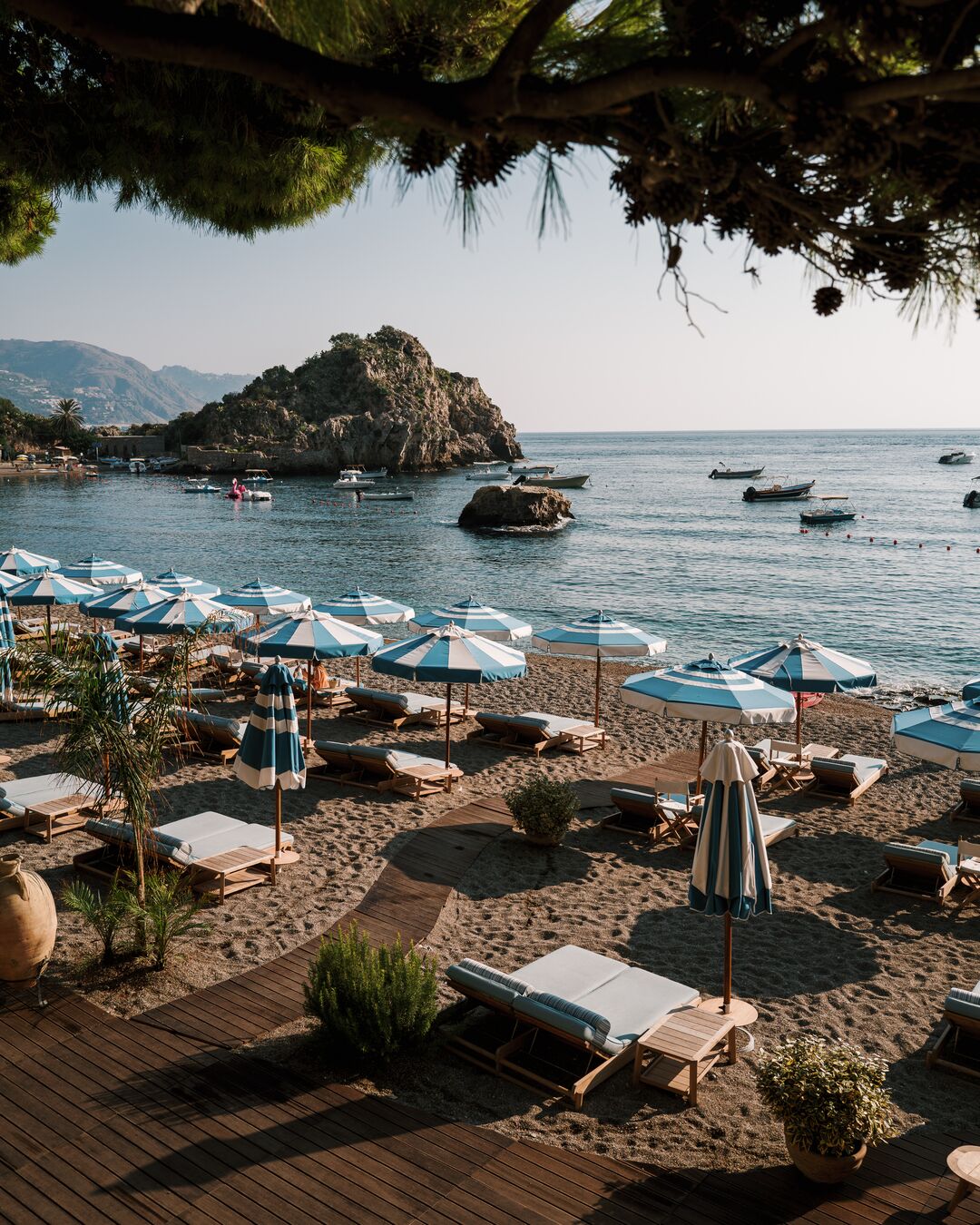
You likely don’t have wholly positive views of the hordes of tourists that travel down Corso Umberto, the main pedestrian street in Taormina, but that shouldn’t stop you from visiting the town as a whole.
From its cliffside position, high-end hotels clamouring for a space with the best view, it looks like something out of a Slim Aarons picture. Belmond has two hotels in Taormina: Grand Hotel Timeo, situated high-up next to the Ancient Greek theatre, and Villa Sant’Andrea on the Bay of Mazzarò, where a warm and salty breeze always blows.
The white-washed, former family Villa has its own private beach, dotted with cabanas (they have their own fridges) and sunloungers, and bedrooms that tread a fine line between modern luxury and nostalgia. The restaurant brushes up against the water.
From £756 per night; visit the Belmond website for more information and to book
Where to eat
Norma Bistrot, Noto
Norma Bistro (Via Rocco Pirri, 59, 96017) has bright green banquettes, chandeliers and whitewashed walls, but is as easy-going as they come. This dynamic is reflected in the menu — an ever-changing selection of elevated and contemporary takes on Sicilian and Northern Italian classics. Guests are greeted with warmth and polished professionalism by staff who suggest popular, daily specials and encourage you to stay for pudding (homemade tiramisu or pistachio ice cream).
Zash Country Boutique Hotel & Spa Restaurant, Etna Zafferano

At the foot of Mount Etna, Zash Country Boutique Hotel & Spa occupies an old palmento, where Catanian nobility once escaped to in the summer months. Its Michelin-starred menus have developed something of a reputation, food served inside an old wine press room carved out of lava stone.
Chef Guiseppe Raciti’s creations include codfish risotto with broad beans and wild fennel, smoked scamorza cheese ravioli with lobster, and Iberian pig pluma in red pepper barbecue sauce. Choose between the tasting and à la carte menus — either way, meals start theatrically with small bites balanced on wooden podiums… moss… botanical fancies… Somehow, despite the drama, it’s gloriously unpretentious.
Casa Diodoros, Agrigento
I could send you to one of the many star-studded restaurants in Taormina, but that would be missing the point. Sicily’s most transcendental meals are often stumbled upon — a stall at Mercato di Ortigia (a sensory assault), a low-key neighbourhood joint with TVs blaring out 80’s pop music, a Catanian street vendor.
Though it is far from street food, Casa Diodoros is still on the more rustic side of things — the tables scattered across a cobbled courtyard or, when it rains, in a renovated barn decorated with illuminated chicken wire-fronted cabinets.
The menu is structured around attempts to boost organic production of Sicilian staples such as pistachio nuts, saffron, almonds and ancient grains. This bounty is woven into richly-flavoured plates including bean stew, traditional pastas, baked ricotta and pumpkin and cheese focaccia.
Hotel Signum, Salina
Family-run Hotel Signum perches atop Salina’s cliffs like a roosting bird, gazing out towards the neighbouring Aeolian island of Stromboli (who eponymous volcano routinely performs for guests with a smokey exhale).
The restaurant — helmed by Martina Caruso, the youngest Italian chef to nab a Michelin star — is arranged over a series of terraces strewn with jasmine and bougainvillaea, and the odd cacti. Imaginative dishes include octopus fagottino, barbecued and breaded scabbard fish with tiger’s milk and tortellini in chicken broth with red prawns and black truffle.
It’s worth settling in for a long stint and splashing out on the nine-dish tasting menu, while the Tyrranean sea slowly shifts through every shade of blue.
What to do (according to the locals)
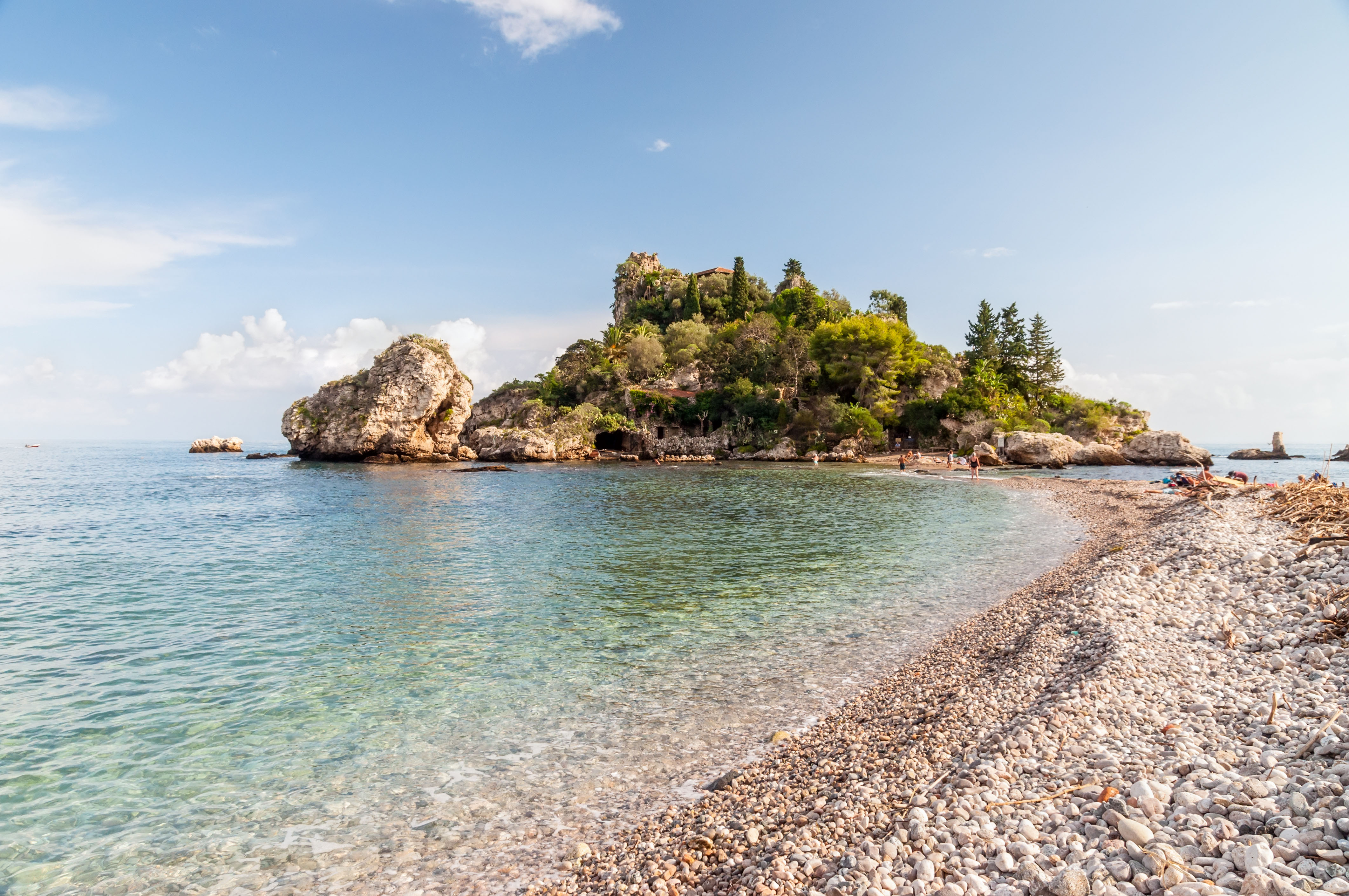
Isola Bella is a small island near Taormina, also known as The Pearl of the Ionian Sea.
Carolina Guthmann and Piero Di Pasquale, the founders of MANIMA, a Palermo-based embroidery brand, suggest going to Pasticceria Cappello for breakfast: The hidden one in Via Colonna Rotta… ‘their cornetti are fantastic, as is the choice of cakes.’ Their go-to spot for aperitivo is Nautoscopio.
They also implore visitors to explore the flea market in Piazza Marina on Sundays, plus the Mercato delle Pulci, situated behind the cathedral. ‘We live right across the street from it and have found some incredible design objects there.’
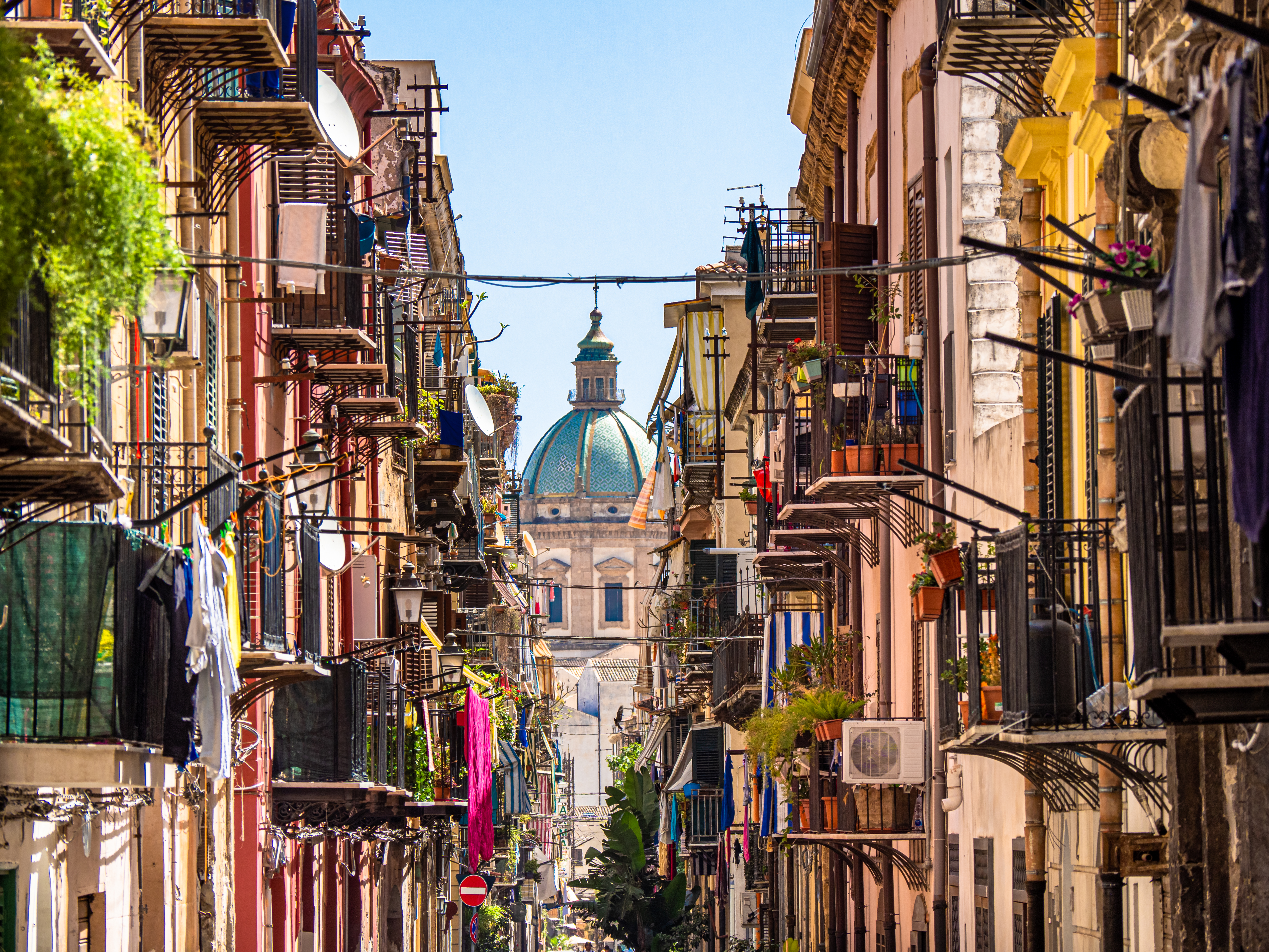
You'll find some of Palermo's best restaurants, markets and shops on its narrow back streets.
‘The best arancina in Palermo,’ says Francesco Bellina, a documentary photographer focused on migration and socio-political issues, ‘is at Coast to Coast [Viale Campania 29]... and “arancina” is female, don’t call it “arancino”!’ Coast to Coast was ‘old Bar Alba,’ he continues. ‘[It was] very famous [for its arancina] in the 80s… later Mr Franco Costa left that and opened Coast to Coast. People go there especially for the most typical arancina of the city.’
Then there’s Trattoria Bersagliere, which the photographer describes as ‘one of the few places where it is possible to eat good food in tourist-heavy Ballarò. It is a typical Palermo trattoria where locals eat. Very low prices; extreme friendliness.’
‘And for coffee,’ he says, finally, ‘go to Baldo’s… a coffee institution in Palermo on Corso Vittorio Emanuele. It has coffee and a few croissants, and no sign. But you really go there for coffee. On the mirror in front of the owner he has written “Don't talk to me” and he's not the nicest person.’

Alfio Puglisi recommends visits to a slew of Etna’s vineyards (above) and wine-makers, such as Vigneri di Salvo Foti, in Milo, Pietracolce in Solicchiata, and Giardini ColeRinger in Randazzo — for its natural wine. He urges guests to linger in Randazzo, to fully absorb its medieval charm — with ‘a refreshing granita at the renowned Santo Musumeci, and a relaxing lunch at Ristorante Vitis’.
Aside from wine, ‘visit the contemporary art gallery and artist studios SARP in Linguaglossa where they present some of the most compelling projects inspired by the unique landscape of Mount Etna and the Mediterranean’.

Of all the Baroque towns of Sicily’s south-east, Noto is the most magnificent, the imposing cathedral crowning a city cast in golden limestone. It’s where Sicilian artist Sergio Fiorentino has his enchanting studio, inside a 19th century convent’s refractory, now clad in Sergio’s contemporary, abstract riffs on classical busts and religious idolism, rendered in shocking cobalt and scratched, metallic paint.
His sculptures can be spotted throughout Noto, as well as in his partner, Rosita Gia’s gallery and boutique, Archivio. ‘After visiting here, go for coffee and cannoli at Caffé Sicilia; then dinner at Manna.’
